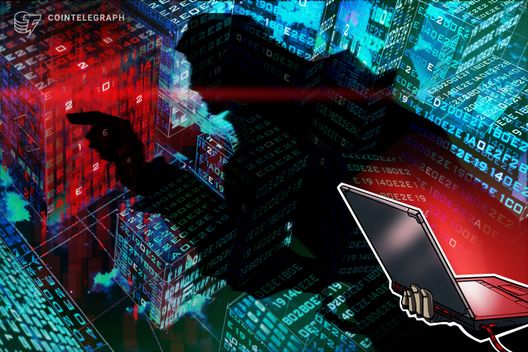Blockstack unveiled a novel consensus mechanism for piggyback blockchains called Proof of Transfer (PoX) on Feb. 6. Instead of relying on its own proof of work, miners under PoX commit Bitcoin (BTC), which circulates in the ecosystem.
The system will be used in Blockstack’s proposed Stacks 2.0 blockchain, which is set for release later in 2020. The Proof of Transfer mechanism was devised to piggyback on the security of Bitcoin, while allowing complex interactions between stakeholders within the Stacks ecosystem.
Cointelegraph spoke with Muneeb Ali, Blockstack’s CEO, to learn more about the proposed mechanism.
Not a sidechain
There are several existing ways for smaller projects to benefit from the security of a bigger network. One is merged mining, where two blockchains using the same mining algorithm can benefit from the same pool of mining hardware. The miners of the bigger network can contribute to the security of the smaller cousin without calculating any extra hashes.
This arrangement exists between Litecoin and Dogecoin, both based on Scrypt.
Sidechains present another way of linking two separate networks. The secondary chains are linked more closely to the original blockchain, as they generally require the commitment of crypto assets from the mother chain to support side activity.
Blockstack’s PoX system relies on a similar commitment of crypto assets, but Ali emphasized that it is not a sidechain. He explained:
“A sidechain gives the ability to transfer your Bitcoin off-chain and then transfer that back. Sidechains also benefit from the security of the Bitcoin chain. This is different — this is creating a new crypto asset while using Bitcoin as the mining, or consensus layer.”
Ali also recalled some of his previous PhD work on merged mining, noting that the system is insecure if less than 90 percent of miners are on both chains.
Proof of Transfer explained
Traditional Proof of Work (PoW) expends electricity, a real-world resource, to provide security. According to Ali, the PoX system comes from a realization that this process “needs to happen only once.” Each different PoW blockchain generally doubles each other’s efforts.
Nevertheless, he noted that there needs to be a cost of mining, as otherwise the network could be spammed. In PoX, miners simply expend Bitcoin instead of electricity. Ali continued:
“There are two types of entities: one is the Stacks miner that is processing transactions, writing new blocks on the Stacks blockchain and getting the newly minted tokens. Then there are Stacks holders who can also participate in the consensus algorithm.”
In this system, the token holders contribute by signaling which fork they are on — thus helping maintain the validity of the Stacks chain. This way of contributing to the network resembles staking, as the holders must commit to locking some of their funds for a certain period of time. In exchange, they receive rewards in Bitcoin — which come from the miners’ commitment.
While Ali acknowledged that the system has similarities with staking, he emphasized that its distinctness:
“Your funds are not at risk — this is the big thing with staking, that when you’re participating in consensus you could be slashed […] Over here your funds are sitting on a different address.”
The actual process of generating blocks is similar to a Distributed Proof of Stake (dPoS) system. Miners engage in a “leader election” with each block, where the chosen entity is responsible for writing the next block. The election is random, but it is weighted by the amount of BTC that each miner commits. The leader then earns the Stacks tokens minted by the new block.
Stance on Bitcoin
The existing version of Blockstack also heavily relies on Bitcoin to store its data.
When asked about his opinion on BTC, Ali replied that he is “definitely long-term bullish on Bitcoin.”
At the same time, he believes that Bitcoin is not “very open to innovation,” pointing to issues such as limited smart contract functionality. He continued:
“But I think there is a massive opportunity to build things on top of Bitcoin, to do innovative things in the Bitcoin developer ecosystem, and I think the Bitcoin community needs to be more open to this innovation. We have seen this in Ethereum, where a lot of innovative startups are doing interesting things around it — and I would love to see that around Bitcoin.”









